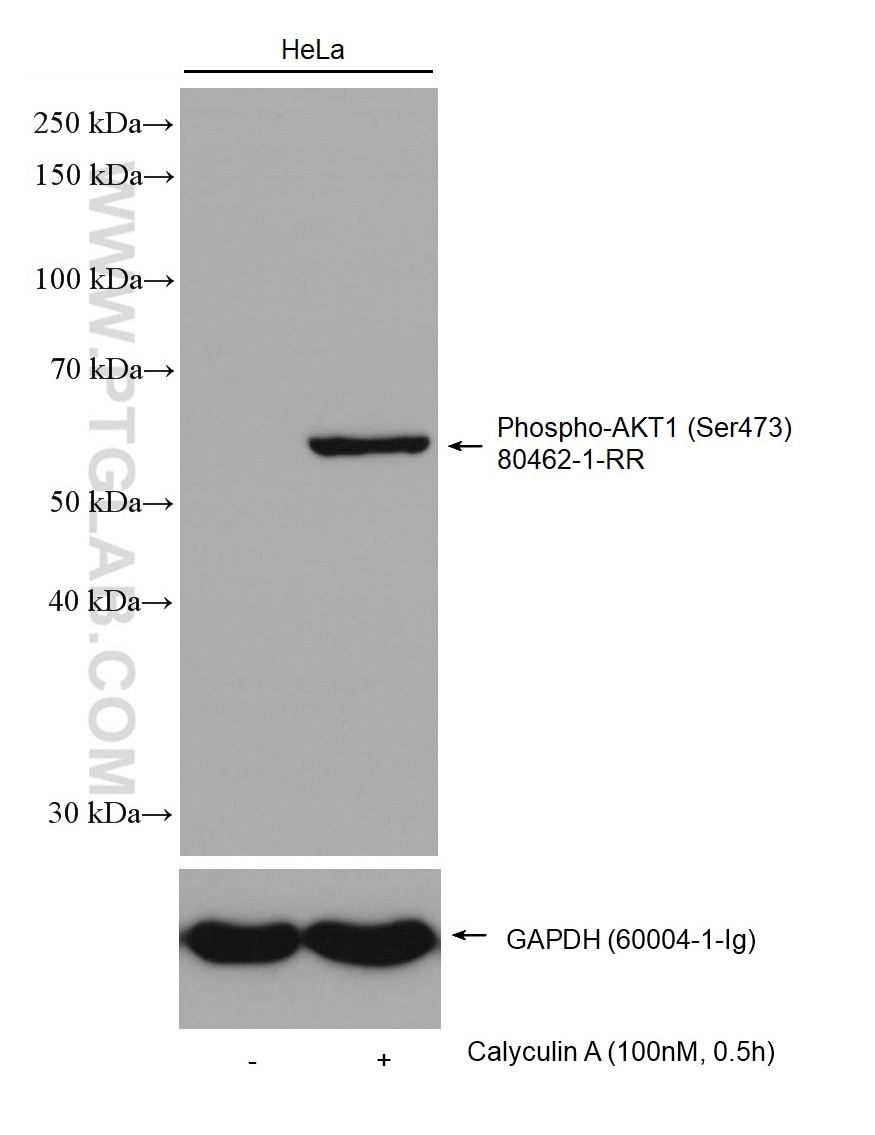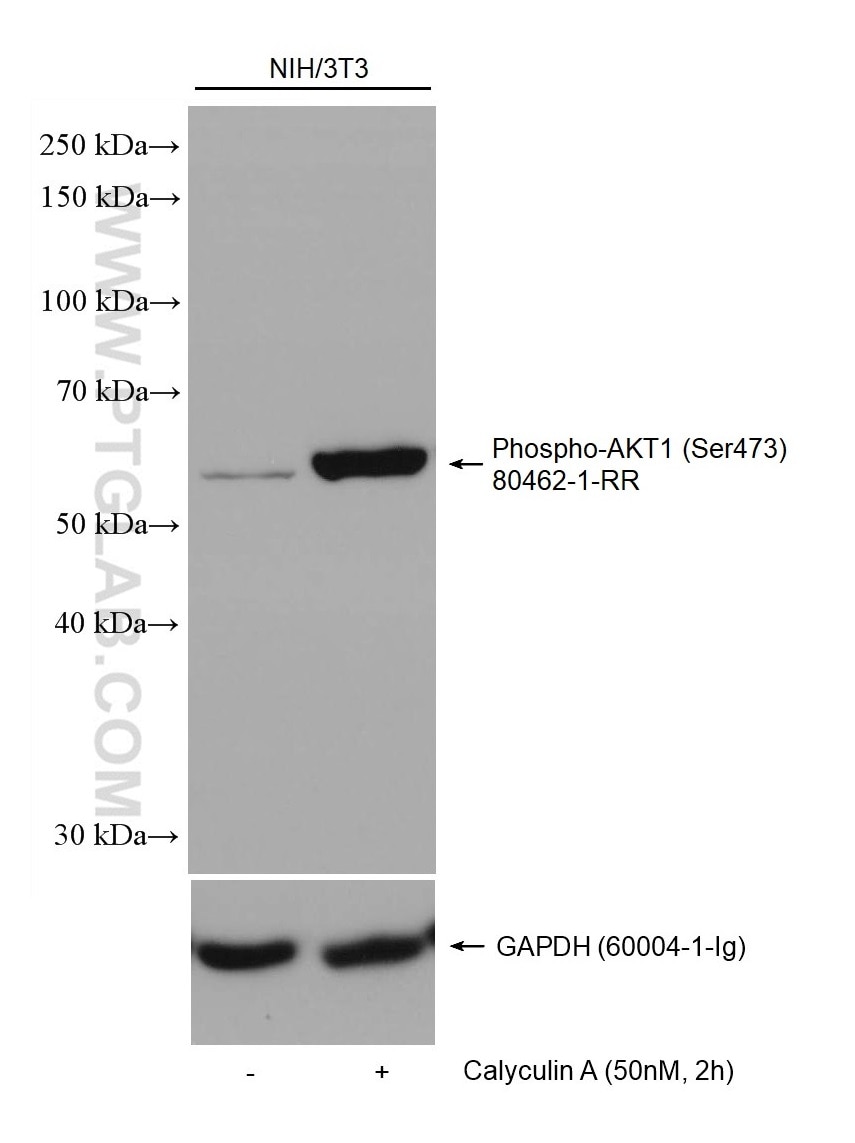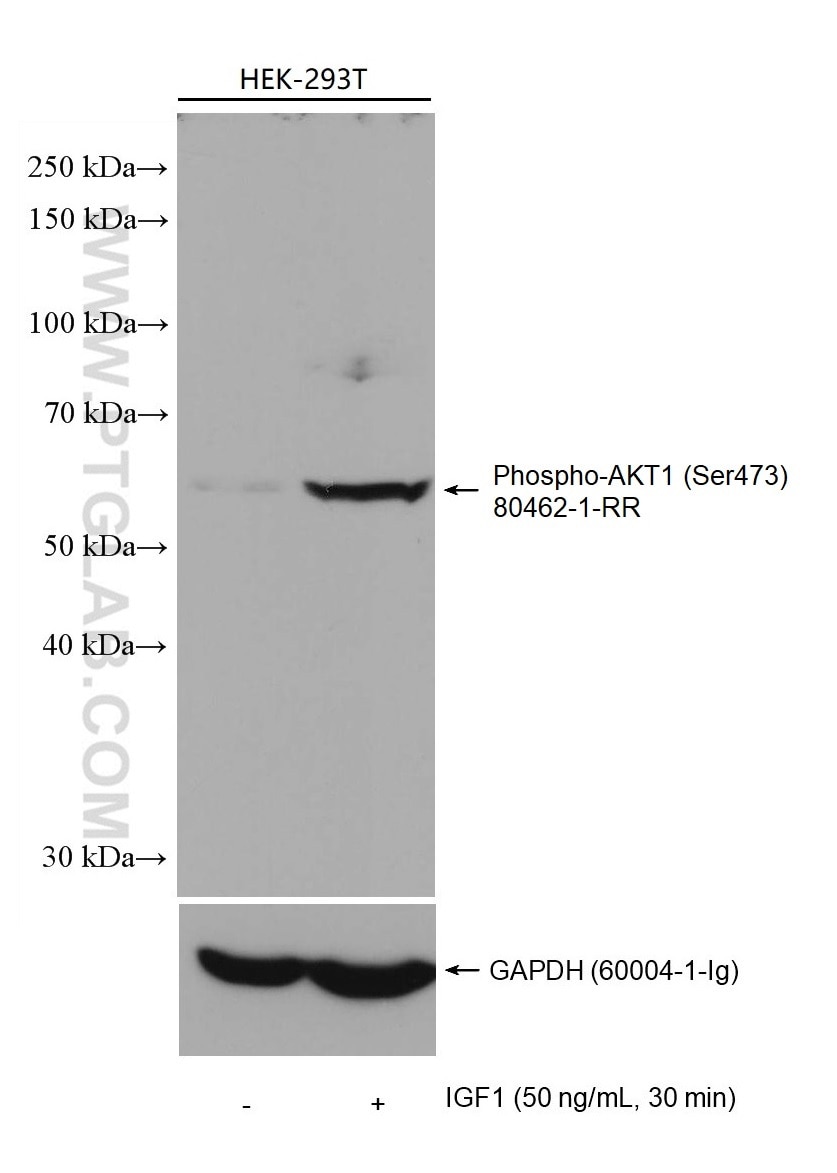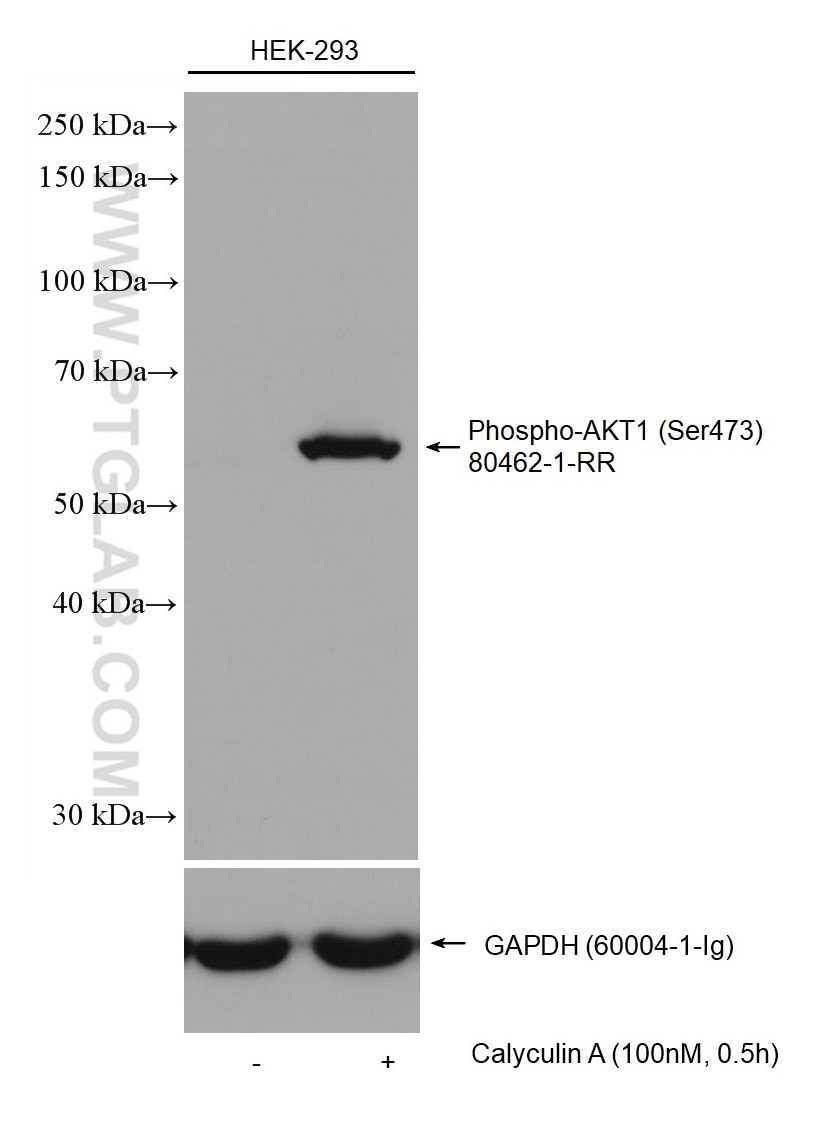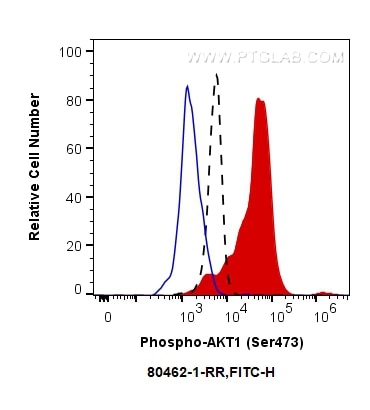Anticorps Recombinant de lapin anti-Phospho-AKT1 (Ser473)
Phospho-AKT1 (Ser473) Recombinant Antibody for FC, WB, ELISA
Hôte / Isotype
Lapin / IgG
Réactivité testée
Humain, souris
Applications
WB, FC, ELISA
Conjugaison
Non conjugué
CloneNo.
2M10
N° de cat : 80462-1-RR
Synonymes
Galerie de données de validation
Applications testées
| Résultats positifs en WB | cellules HeLa, cellules HEK-293, cellules HEK-293 traitées à la calyculine A, cellules HEK-293T, cellules HEK-293T traitées à l'IGF-1, cellules HeLa traitées à la calyculine A, cellules NIH/3T3, cellules NIH/3T3 traitées à la calyculine A |
| Résultats positifs en cytométrie | cellules NIH/3T3 traitées à la calyculine A, |
Dilution recommandée
| Application | Dilution |
|---|---|
| Western Blot (WB) | WB : 1:2000-1:10000 |
| Flow Cytometry (FC) | FC : 0.50 ug per 10^6 cells in a 100 µl suspension |
| It is recommended that this reagent should be titrated in each testing system to obtain optimal results. | |
| Sample-dependent, check data in validation data gallery | |
Applications publiées
| WB | See 1 publications below |
Informations sur le produit
80462-1-RR cible Phospho-AKT1 (Ser473) dans les applications de WB, FC, ELISA et montre une réactivité avec des échantillons Humain, souris
| Réactivité | Humain, souris |
| Réactivité citée | Humain |
| Hôte / Isotype | Lapin / IgG |
| Clonalité | Recombinant |
| Type | Anticorps |
| Immunogène | Peptide |
| Nom complet | v-akt murine thymoma viral oncogene homolog 1 |
| Poids moléculaire observé | 56-62 kDa |
| Numéro d’acquisition GenBank | NM_005163 |
| Symbole du gène | AKT1 |
| Identification du gène (NCBI) | 207 |
| Conjugaison | Non conjugué |
| Forme | Liquide |
| Méthode de purification | Purification par protéine A |
| Tampon de stockage | PBS avec azoture de sodium à 0,02 % et glycérol à 50 % pH 7,3 |
| Conditions de stockage | Stocker à -20°C. Stable pendant un an après l'expédition. L'aliquotage n'est pas nécessaire pour le stockage à -20oC Les 20ul contiennent 0,1% de BSA. |
Informations générales
AKT is a serine/threonine kinase and it participates in the key role of the PI3K signaling pathway. Phosphatidylinositol-3 kinase (PI3K) is the key regulator of AKT activation. The recruitment of inactive AKT protein to PIP3-rich areas of the plasma membrane results in a conformational change that exposes the activation loop of AKT. AKT's activating kinase, phosphoinositide-dependent protein kinase (PDK1) , is also recruited to PIP3 microdomains. PDK1 phosphorylates AKT on threonine 308 (Thr308) of the exposed activation loop, activating AKT and leading to a second phosphorylation of AKT at serine 473 (Ser473) by a kinase presumed to be mTORC2 that further potentiates kinase activity. Active AKT will phosphorylate various downstream protein targets that control cell growth and translational control and act to suppress apoptosis. (PMID: 31594388, PMID: 30808672). 80462-1-RR specifically recognizes AKT1 phosphorylated at Ser473.
Protocole
| Product Specific Protocols | |
|---|---|
| WB protocol for Phospho-AKT1 (Ser473) antibody 80462-1-RR | Download protocol |
| Standard Protocols | |
|---|---|
| Click here to view our Standard Protocols |
Publications
| Species | Application | Title |
|---|---|---|
ACS Omega Interpreting the Pharmacological Mechanisms of Sho-saiko-to on Thyroid Carcinoma through Combining Network Pharmacology and Experimental Evaluation. |
